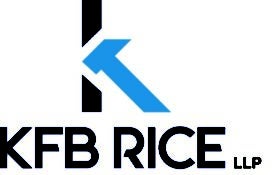At first blush, after the enactment of the new law, the use of a C Corporation appeared to be the winner. Indeed if the C Corporation reinvests all its income back into the C Corporation and fails to make any distributions, the overall federal and state combined rate will approximate 28% in California.
Unfortunately, that is not the way most family businesses operate and the 28% rate is not reality for most businesses in California. After dividends are paid out, the business owner would be left paying up to a net closer to 50% plus in taxes, instead of the 28% rate mentioned above.
One reason to choose the C corporation would be to avoid capital gains on the sale of the business through the exclusion provided taxpayers under Section 1202. Sec. 1202 allows noncorporate taxpayers to exclude from federal income tax 100% of the gain on the sale of certain qualified small business stock (QSBS), limited to the greater of $10 million or 10 times the adjusted basis of the investment. Unlike in prior years, this creates possible opportunities for noncorporate taxpayers who dispose of QSBS in a taxable transaction to potentially exclude the entire gain for federal tax purposes.
Unfortunately, that exclusion is not easy to qualify for and the State of California has eliminated that provision for State income tax purposes.
For a taxpayer to qualify for the exclusion, five criteria generally must be met:
1. The stock must have been directly acquired via an original issuance from a U.S. C corporation (Sec. 1202(c)(1));
2. Both before and immediately after stock issuance, the C corporation’s tax basis in gross assets did not exceed $50 million (Sec. 1202(d)(1));
3. The C corporation and shareholders must consent to supply documentation regarding QSBS (Sec. 1202(d)(1)(C));
4. The C corporation conducts certain qualified active trades or businesses (Sec. 1202(e)); and
5. The stock must have been held for more than five years (Sec. 1202(b)(2)).
The other option of minimizing tax is for the owner of the stock to hold on to it until he or she dies resulting in a basis step-up. I have not had many clients tell me they are willing to wait until they die to sell the business. However, for those who are willing to allow the earnings to continue to grow under the corporation, they must or should be concerned about the personal holding company tax and the accumulated earnings tax, neither of which have been modified since 1954.
Certainly one exit strategy to consider would be to make an S election to allow the distribution of current earnings which would be subject to just one layer of income tax, at the existing marginal rates for individuals. Although the accumulated C corporation earnings can also remain in the S corporation, the owners will need to be very watchful to ensure that the passive investment income test is not breached.
Most taxpayers need and want to take distributions from their business. The most effective way to do so would be through pass-through entities, such as S Corporations, LLCs, Partnerships or Sole Proprietorships. However, if a taxpayer is merely electing one of these new entities because of new Section 199A, which allows for a 20% deduction of Qualified Business Income (“QBI”), it is important for the taxpayer to be aware that there is no guaranty that they will get that deduction.
To be eligible for a deduction under 1999A the taxpayer needs to know if it is in a qualified trade or business because the deduction is not limited to active trade or businesses. Then the taxpayer has to deal with the calculation of qualified business income. Unfortunately, there are still many undefined terms in Section 199A and then there are limits on the amount of the deduction based upon adjusted gross income or W-2 income. The only bright star is that some limitations only apply if the taxpayer’s income exceeds $157,500 for individuals or $315,000 for joint filers.
S Corp vs. Partnership
The next issue the taxpayer needs to face is whether they should elect an S corporation or a partnership. Suppose the S corporation generates $300,000 and distributes $200,000 to the owner as compensation. The S corporation would deduct the $300,000 as wages so it is left with $100,000 in QBI eligible for the pass-through deduction. However, if the partnership did not pay wages, and the partner received $300,000 and distributed its share as profits, the taxpayer would have $300,000 in QBI eligible for the pass-through deduction. There would be self-employment tax to pay and the taxpayer would have to compare the self-employment tax against the QBI deduction. Of course, it is possible that the IRS will come up with regulations that may categorize some of the partnership’s profit as wages for purposes of computing QBI.
Whether Trump’s new tax law remains in effect, is uncertain, given the political climate in Washington D.C. In 1986 we were all promised a flat tax of 28% in exchange for giving up some deductions. Some years later, it was more than 40% if you take into account the Obamacare tax. It is imperative that a taxpayer sit down with his or her legal and tax advisors to properly structure a business entity.
